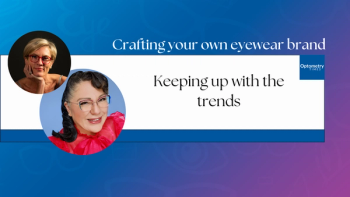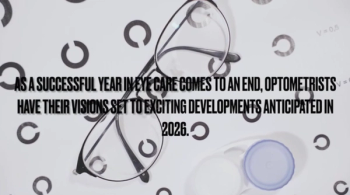
G360 2023: The latest in IOLs: When and how to use them
Shan Lin, MD, gives key takeaways from his G360 presentation, "The latest in IOLs: When and how to use them?"
Shan Lin, MD, sat down with Sheryl Stevenson, group editorial director of eye care brands at MJH Life Sciences, the parent company of Optometry Times, to share highlights from his 2023 Glaucoma 360 presentaion, "The latest in IOLs: When and how to use them?"
Editor's note: This transcript has been lightly edited for clarity.
Stevenson:
We're joined by Dr. Shan Lin at Glaucoma 360. Could you tell us a little about your talk for this year, "The latest in IOLs: When and how to use them?"
Lin:
Sure, Sheryl, so I'm going to focus really, it's a short talk. It's going to be focused mostly about the relationship of our newer-generation intraocular lenses in relation to glaucoma in particular. Obviously, this is a glaucoma symposium.
There's a lot of exciting new lenses and like many of my colleagues, I put these types of lenses in, these toric lenses, multifocal, new generation of extended depth of focus lenses. You have to be careful with patients who have glaucoma. I think that's really going to be the focus of what I'll be talking about.
Just as a little summary, for example, with patients who have significant glaucomous field loss, you want to be careful as to whether you do choose a multifocal lens. The new extended depth of focus intraocular lenses can be used in some cases. There can be some contrast sensitivity loss with those lenses as well, as well as with toric lenses, which is what we'll talk about as well. In those special kinds of situations where patients do have visual field loss, we may have to be more careful in those selecting those lenses for those patients.
For example, the multifocal lens or the traditional multifocal lenses that are diffractive—those you want to be a little careful, they're often designed with concentric circles. There's issues for all patients, issues of halos—sometimes just a little bit of glow around lights, for example, when you're looking at night at street lamps, for example, or for oncoming headlights. And so that's for everybody. You have that little bit of visual phenomenon with those lenses.
There's also some contrast sensitivity loss with those lenses as well. When you have a patient with glaucoma who already has some limited amount of vision, some contrast sensitivity loss and you're adding to that sort of visual dysfunction, you probably want to avoid it in people who have visual field loss already from glaucoma.
For extended depth of focus lenses, there are studies showing that it's really a more minimized loss of contrast sensitivity. It may be okay for patients who have sort of earlier forms of glaucoma, such as very peripheral field loss. It's really going to be up to the physician themselves, in talking with the patients, whether they may be able to tolerate that possible loss of some contrast sensitivity. Of course, all these lenses have the aspect that you may not have 100% of your vision, parts of the lenses are dedicated for near and parts are dedicated for far. I have an extensive conversation with patients about that and what their expectations are.
With the toric lenses, generally, they're okay for patients who have peripheral visual field loss. With more central visual field loss, it's not that they're going to be necessarily harmful or have substantial contrast sensitivity loss with that, but it's more is there going to be benefit for those patients. So if you're spending, if the patient is having to spend $2,000 or $3,000 out of pocket per eye and they have central field loss, that benefit from the toric lens of correcting some astigmatism may not be really a significant benefit or practical benefit.
I would also add, too, that we have the technologies now. There's many different companies and brands but I'll just speak to what I am aware of and what I use, which is more on the Alcon systems, the ORA technology, for checking the intraocular pressure or the intraocular lens power at the time of surgery as well as the orientation of the lens.
You can also use technologies that actually help you to orient the lens even where you would want to orient the lens beforehand—the VERION system in the case of the Alcon system. There's a lot of technologies which really help us enhance placing that lens in the right position, selecting the right lens power, as well as the correct lens power for the astigmatism as well.
Newsletter
Want more insights like this? Subscribe to Optometry Times and get clinical pearls and practice tips delivered straight to your inbox.













































.png)


